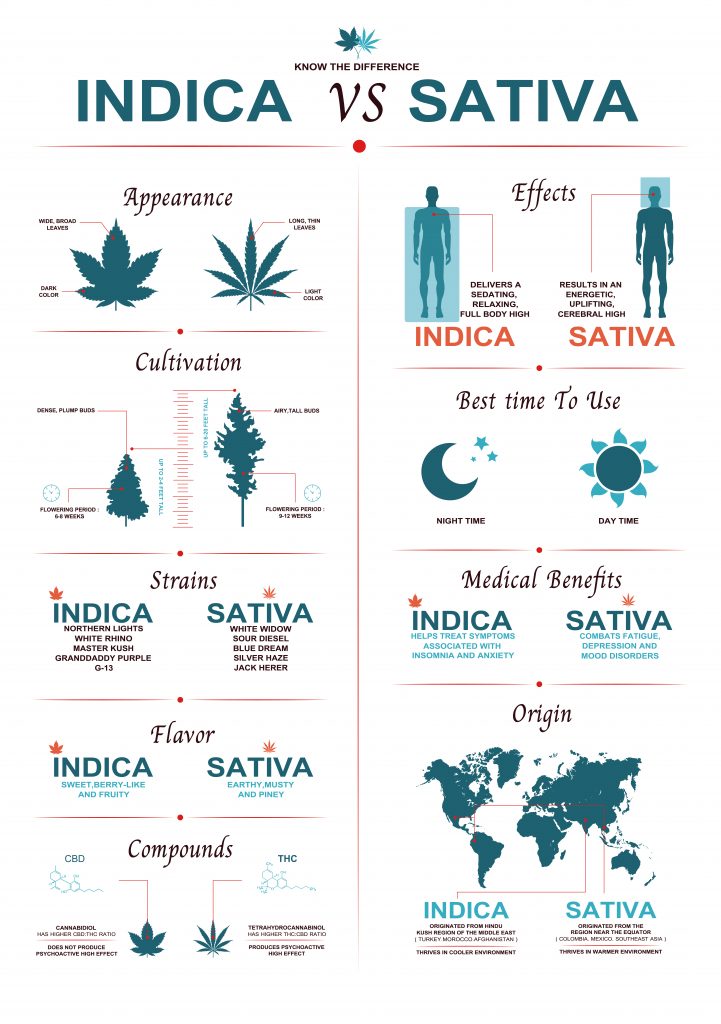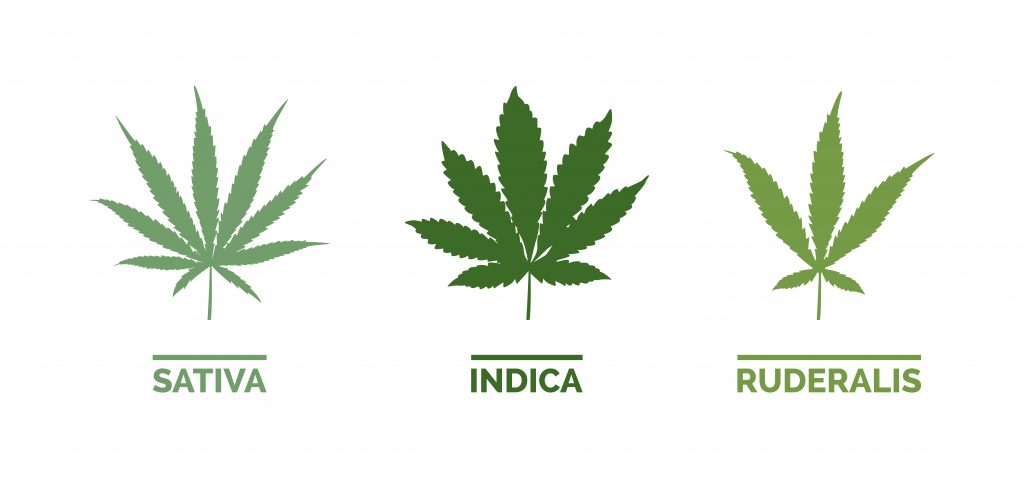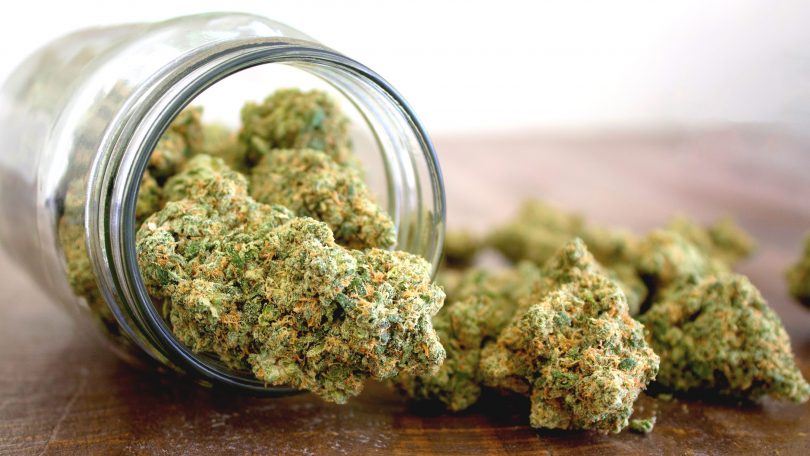When it comes to classifying cannabis varieties, there’s a huge amount of confusion and misinformation flying around.
As the popularity of cannabis in all its many forms continues to grow, it’s becoming more and more important for labels to be accurate in order for people to know what they are consuming.
In this article, we will be looking at the Sativa/Indica distinction and its relevance to hemp flower. As is often the case when discussing cannabis, thanks to advances in scientific research, things can get confusing rather quickly, so we’ll try to lay it out as clearly as possible.
Before we dive into details, about hemp flowers, sativa and indica, we would like to remind you that the best available high-CBD hemp flowers, are only available to the subscribers of the CBD Flowers Weekly newsletter.
Looking to buy the best flowers?
Subscribe below and get our weekly CBD hemp flower recommendations, straight to your inbox.
First off, let’s examine just what hemp is and how it differs from the psychoactive cannabis, or ‘marijuana’.
Hemp vs ‘Marijuana’
To begin with, let’s clarify that both marijuana and hemp are types of cannabis – the proper name for the plant. What most people mean when they say ‘marijuana’ is THC-rich cannabis – THC being the main psychoactive compound in cannabis. The word ‘marijuana’, however, has its roots in politics and, unfortunately, racism.
What is ‘Marijuana’?
Although it’s the most commonly used name for cannabis in the United States today, ‘marijuana’ is suspected to originally be a colloquial term for a type of wild Mexican tobacco. When hundreds of thousands of Mexicans legally immigrated into the U.S, fleeing civil war between 1910 and 1920, they bought cannabis and the term ‘marijuana’ with them.
In a racially-motivated attempt to slander and criminalize Mexicans, U.S. authorities – most notably Harry Anslinger of the FBI – started using the more Spanish-sounding slang word ‘marijuana’, or ‘marihuana’, in reference to cannabis.
So, from now on, we will not be using this term.
What is hemp?
Hemp is cannabis with negligible levels of THC (less than 0.3% by law) and has been traditionally grown for its stalk fiber and nutritious seeds. The term ‘hemp’ is really a legal distinction in order to separate it from the THC-rich cannabis that people have traditionally smoked.
However, there’s been a growing interest and demand for CBD over the last few years. And this has led to farmers cultivating hemp with high levels of CBD, since there is no limit on this particular cannabinoid. Most CBD-rich hemp is processed into products like oils and salves, although an ever-increasing number of farmers are now cultivating hemp to be smoked.
While in the past, hemp has been tall, stringy and seedy, hemp grown for smoking can now be indistinguishable from the THC-rich cannabis – the only difference being the cannabinoid profile. Which brings us to the booming hemp flower industry…
What is hemp flower?
As mentioned above, hemp is now being cultivated to be smoked just like regular THC-rich cannabis. That means the flower, or bud – which is where cannabinoids are produced – is in high demand.
This has seen an influx of high-grade, well-manicured, CBD-rich hemp flower appear in vape and head shops around the country, as well as in numerous online shops. The buds can look, smell and taste just like cannabis with high levels of THC that you might find in dispensaries. Unlike these buds, however, hemp flower doesn’t have the same psychoactive effects.
While it would be wrong to say that hemp flower is not psychoactive, the effects are far less cerebral. Many consumers describe a body-high and a sense of calm or relaxation from hemp flowers.
The truth about sativa and indica
We’ve already dispelled one common cannabis myth, so now let’s dismantle another; the distinction between indica and sativa varieties of cannabis.

Dr Ethan Russo, Director of Research and Development for the International Cannabis and Cannabinoids Institute (ICCI), as well as a renowned researcher and industry leader, has this to say on the matter: “There are biochemically distinct strains of Cannabis, but the sativa/indica distinction as commonly applied in the lay literature is total nonsense and an exercise in futility.”
Let us explain…
Origins of sativa and indica
While cannabis has been cultivated for thousands of years (as far back as 8000 BCE), the terms indica and sativa were introduced only in the 18th century. The term ‘sativa’ is a Latin botanical adjective meaning cultivated. ‘Cannabis Sativa’ was assigned by Carl Linneaus to low-THC plants being grown for seed and fiber in Europe and western Eurasia.
Cannabis Indica was assigned to psychoactive varieties discovered in India, where it was cultivated for religious purposes, as well as its seeds, fiber, and pollen (hashish).
To further confuse things, there are actually two types of Cannabis Indica; Cannabis indica ssp. Indica and Cannabis indica ssp. Afghanica. Most THC-rich cannabis consumed today is one of these two types. However, the terms Indica and Sativa have somehow been mislayed onto them.
In fact, what most people these days call ‘sativa’ is actually Cannabis indica ssp. Indica – a tall, narrow-leaf variety of cannabis. And what they call call indica is actually Cannabis indica ssp. Afghanica. – a smaller, broad-leaf plant.
Therefore, Dr. Russo suggests that “since the taxonomists cannot agree, I would strongly encourage the scientific community, the press, and the public to abandon the sativa/indica nomenclature and rather insist that accurate biochemical assays on cannabinoid and terpenoid profiles be available for Cannabis in both the medical and recreational markets. Scientific accuracy and public health demand no less than this.”
So is hemp flower sativa or indica?
According to the above definitions, hemp flower will generally be a part of the Cannabis Sativa lineage.
However, as the two distinctions mean very little in reality, and the fact that there has no doubt been a fair amount of cross-breeding over the centuries, there isn’t much utility in using these terms to describe either hemp or cannabis.
What about ruderalis?
Just about got your head round all that? Good. Now let’s introduce another variety of cannabis… you know, just to keep it interesting.

Say hello to Cannabis Ruderalis, a wild variety of cannabis found in the Northern regions of Asia and Central/Eastern Europe. Due to the reduced growing seasons in this part of the world, Cannabis Ruderalis has adapted to its environment by flowering automatically after 21-30 days of vegetation. (Other cannabis varieties require a 12 hours of darkness and 12 hours of light to start flowering.)
In recent years, thanks to cross-breeding, this auto-flowering trait has been bred into high-grade cannabis varieties grown for smoking. The result is cannabinoid-rich plants that mature quickly and flower automatically despite the light cycle they’re under.
How should we classify cannabis?
Now that we’ve put the sativa and indica distinctions to bed, how should we categorize and classify cannabis?
Well, as a cannabis strain’s effects are caused by its chemical makeup – cannabinoids, terpenes, flavonoids, and more – this is probably the route to go down.
What’s certainly needed is categories based on cannabinoid content – i.e THC-dominant, CBD-dominant, THC and CBD mixed, THCv- dominant, CBG-dominant, and any other cannabinoids that can be promoted during cultivation.
And perhaps terpene content should also be taken into account, as the concentration of different terpenes can play a significant part in the effects a particular strain induces. For example, myrcene, a common monoterpene found in cannabis, has a strong sedative, couch-lock effect. On the other hand, limonene (also found in citrus peels) has an uplifting effect on mood.
Summary
However cannabis is categorized in the future, it is sure to be more appropriate than the meaningless sativa/indica distinction.
So, while modern smokable hemp flower is generally thought to be mostly from the Cannabis Sativa family, this information does not mean what most people these days think it does.
The truth is that cannabis varieties are far more complex than previously thought and feature many overlapping characteristics – which are being further diluted as endless crossbreeding occurs.
Therefore, when it comes to selecting hemp flower, the best thing to do at the moment is to focus on the cannabinoid and terpene content in order to judge the effects. Any sativa/indica labeling can happily be ignored.
Want to buy premium high-CBD hemp flowers?
The best available CBD flowers, are only available to the readers of the CBD Flowers Weekly. Going out every Thursday morning, the CBD Flowers Weekly is your top source for learning about the best CBD flowers and where to get them. Subscribe today!

